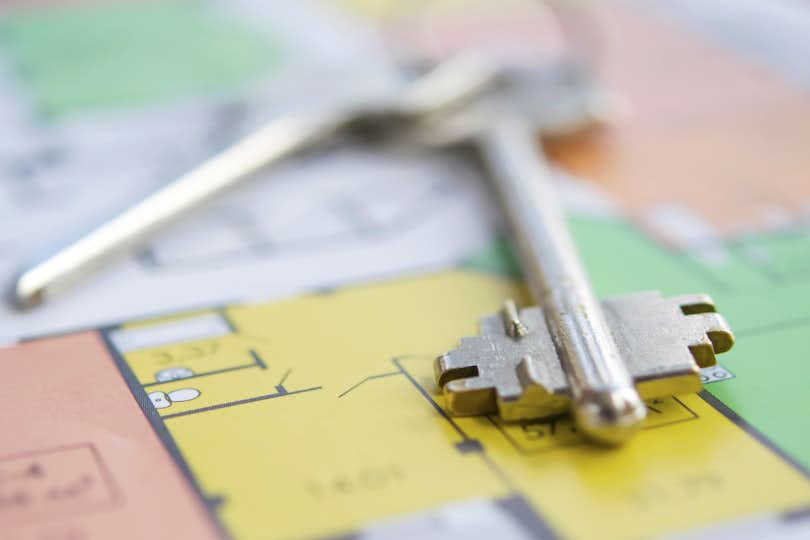
Determining the size of a house is essential for various purposes, whether you're buying, selling, or renovating a property. Square footage is the commonly used measurement to quantify the size of a house.
By accurately calculating the square footage, you can make informed decisions, estimate costs, and assess the overall value of a property.
We will explore how square footage is calculated and discuss the process of figuring out the size of a house. You'll be provided with valuable insights to guide you through the process of sq ft calculation so accurate property values can be established.
Understanding How Square Footage is Calculated
Square footage is a measurement used to determine the area of a two-dimensional space. In the case of a house, square footage is calculated by multiplying the length and width of each room or area and summing up the results to obtain the total square footage of the entire house.
It's essential to note that only enclosed, heated living spaces are typically included in the square footage calculation, while unfinished areas like basements, garages, and attics are usually excluded.
Here are some of a few key aspects:
Measurement Units
Square footage is typically measured in square feet (sq ft) or square meters (sq m). In the United States, square feet is the most commonly used unit of measurement, while square meters are more prevalent in many other countries.
It's crucial to be aware of the unit of measurement being used to ensure accurate calculations and avoid confusion.
Exterior vs. Interior Measurements
When calculating square footage, it's important to differentiate between exterior and interior measurements. Exterior measurements consider the outer dimensions of the house, including the walls, while interior measurements focus on the actual living space within the walls.
For most purposes, interior measurements are more relevant and commonly used.
Finished vs. Unfinished Spaces
Square footage calculations typically include only finished and heated living spaces within the house. Finished spaces refer to habitable areas for daily living, such as bedrooms, living rooms, kitchens, and bathrooms.
Unfinished areas, such as basements, garages, and attics, are usually excluded from square footage calculations, as they may need more insulation, heating, or other features necessary for comfortable habitation.
Standard Measurement Guidelines
Standard measurement guidelines have been established to ensure consistency and accuracy in square footage calculations. These guidelines provide specific instructions on measuring various spaces within a house.
For instance, hallways, closets, and staircases are typically measured differently from regular rooms. It's essential to familiarize yourself with these guidelines or consult industry professionals to ensure adherence to accurate measurement practices.
How to Figure Out the Square Footage of a House
To accurately determine the square footage of a house, follow these steps:
Prepare The Necessary Tools
Gather a measuring tape, graph paper, and a calculator to assist you during the measurement process. These tools will help you accurately record the dimensions and calculate the necessary.
Measure Room by Room
Begin by measuring each room in the house individually. Start at one corner of the room and measure the length and width of the space.
For irregularly shaped rooms, divide them into smaller sections, measure each section separately, and sum up the results. Record the measurements on graph paper, labeling each room accordingly.
Account For Obstacles
When measuring a room, note any obstacles affecting the floor area, such as built-in furniture, fireplaces, or other architectural features. Exclude these obstacles from the measurements to ensure accuracy.
Calculate Individual Areas
Once you have measured each room, calculate the square footage of each area by multiplying the length by the width.
For example, if a bedroom measures 14 feet by 10 feet, the square footage would be 140 feet (14 ft × 10 ft = 140 sq ft). Repeat this calculation for all the rooms in the house.
Tally Up the Results
Add up the individual square footage calculations to obtain the house's total square footage. Include all heated living spaces, excluding garages, porches, and unfinished basements. This final figure represents the overall size of the house in square footage.
Seek Professional Assistance
If you need clarification on performing the measurements yourself or require an official square footage measurement, consider hiring a professional appraiser or architect specializing in property measurements. They will ensure accurate calculations and provide an official report that can be used for legal or real estate purposes.
Estimated home values will be wrong when you don't have an accurate property size. When you are buying or selling a home, this can be problematic.
Additionally, the tax assessment can be off if the city or town does not have accurate square footage. This is where your knowledge of how to measure a house properly can come in handy.
Final Thoughts
Calculating the square footage of a house is a crucial step when assessing its size, value, and potential. By following the steps outlined in this article, you can accurately determine the square footage of a house, whether you're buying, selling, or remodeling.
Remember to include only enclosed, heated living spaces in your calculations, and seek professional assistance if needed. With the knowledge of the property's square footage, you can confidently make informed decisions and navigate the real estate market.
